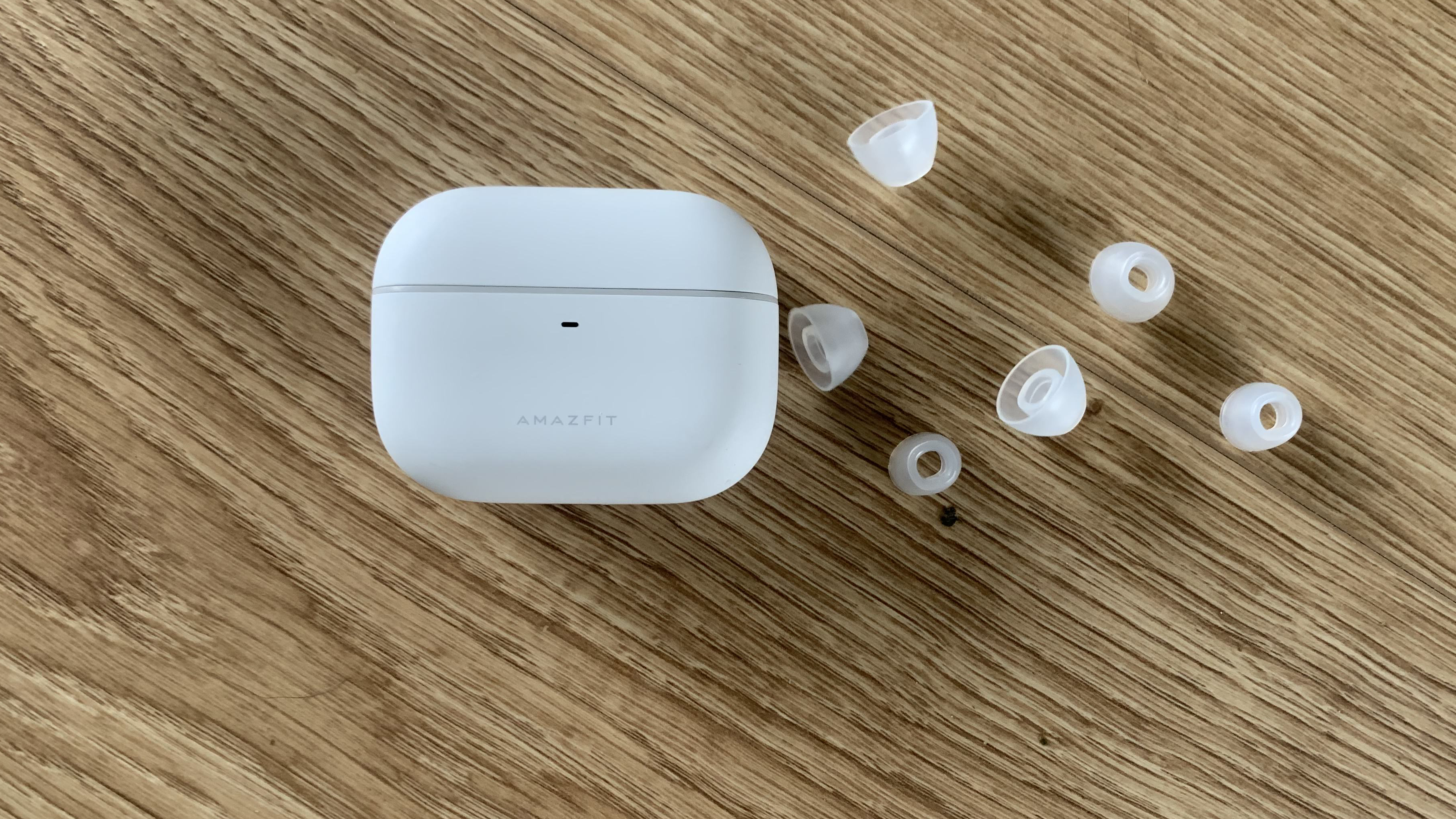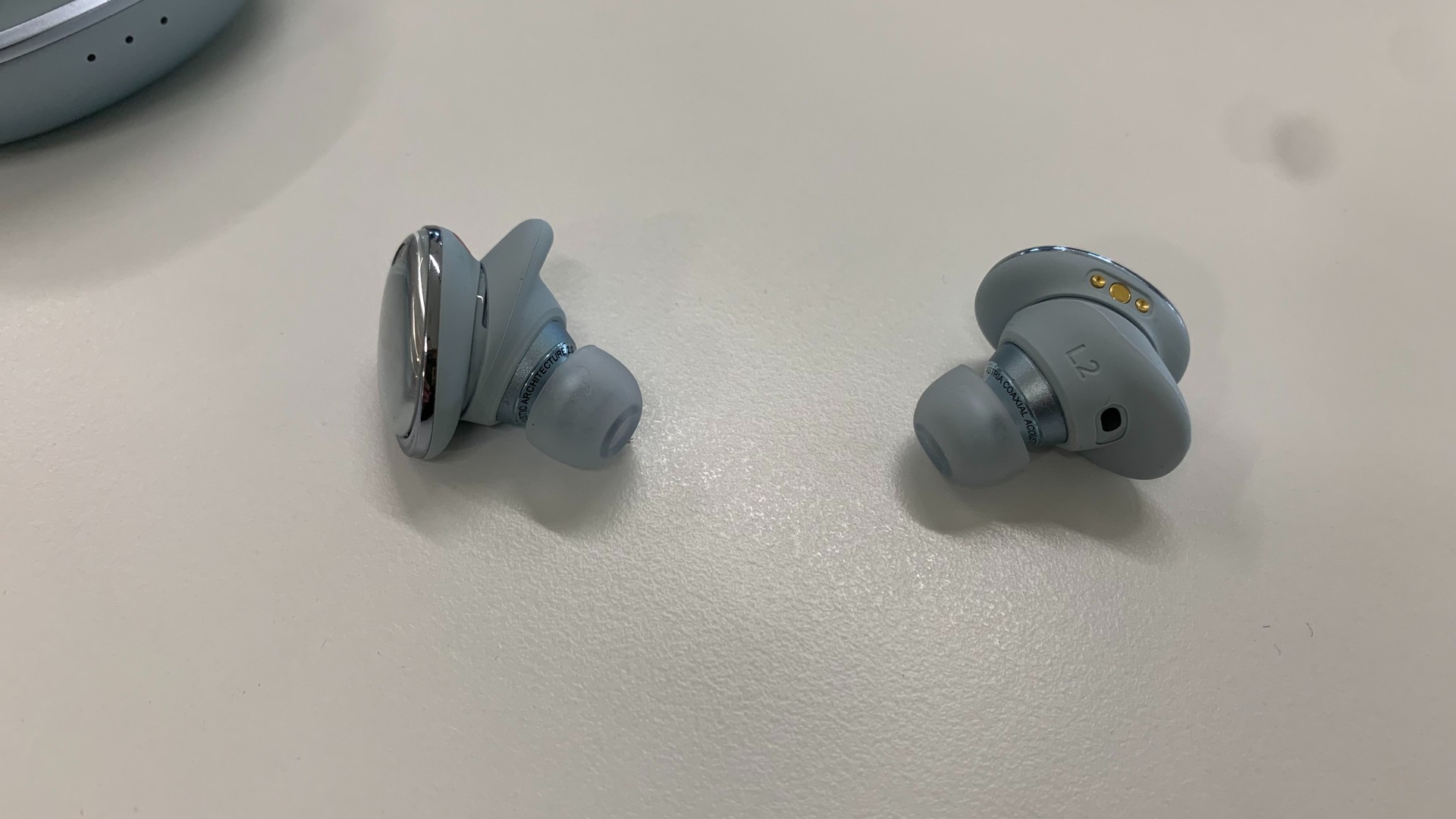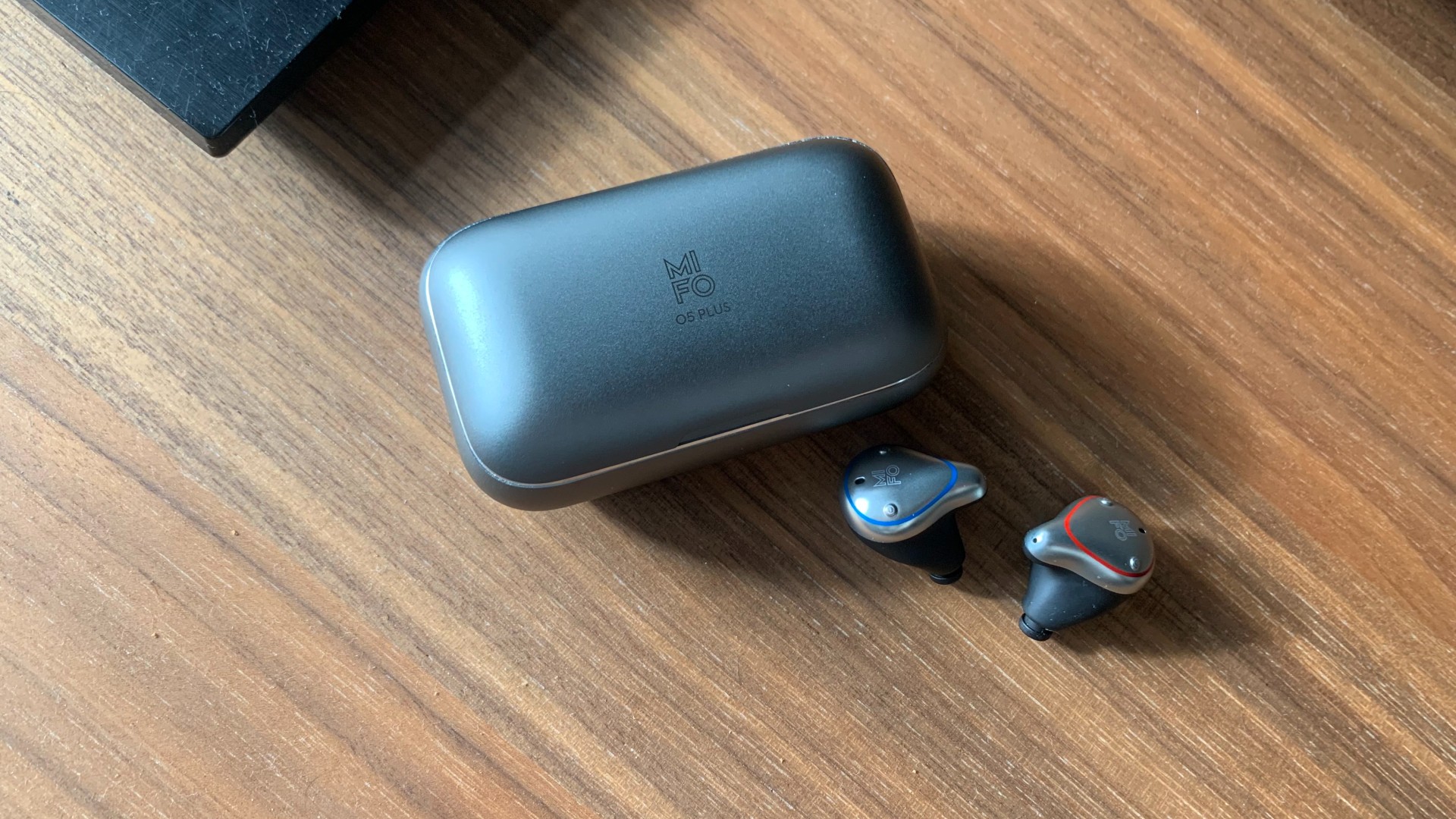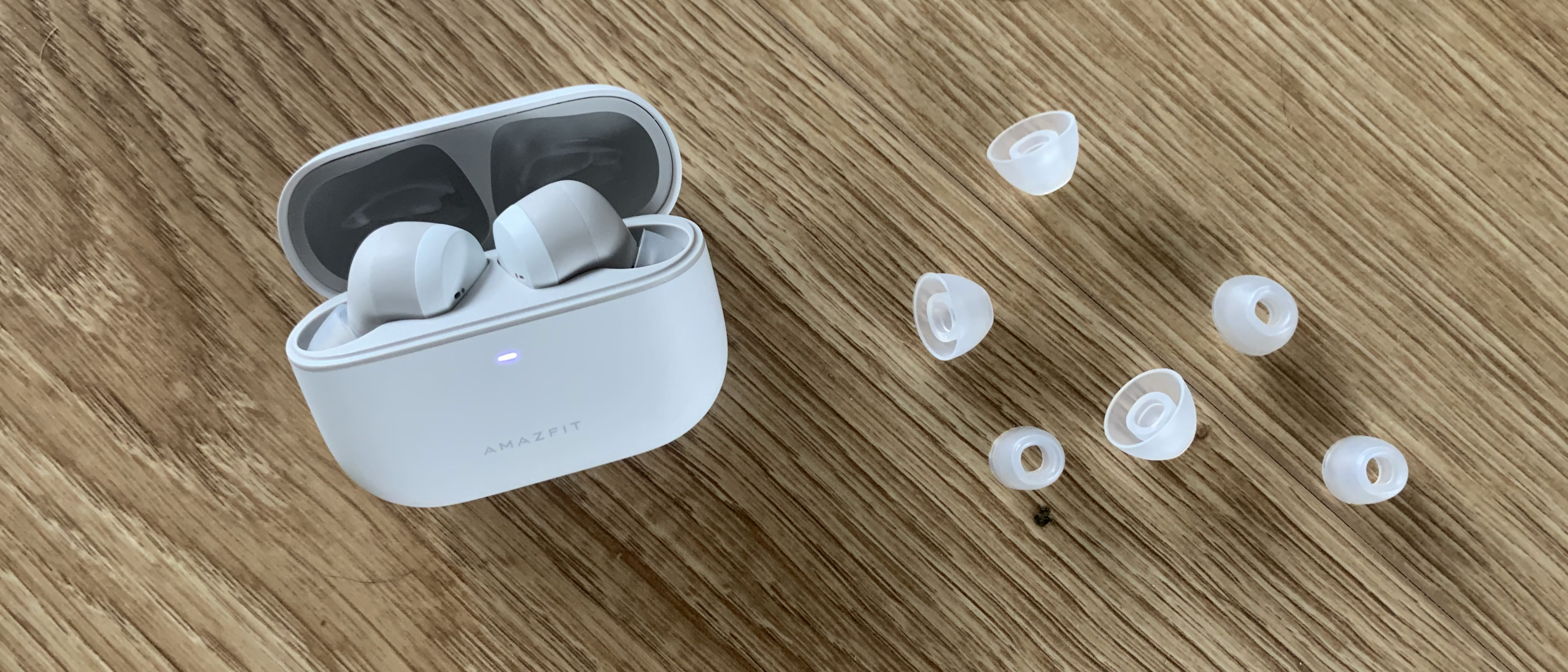Live Science Verdict
The intelligent Amazfit PowerBuds Pro earbuds do far more than just deliver powerful beats. These intuitive pocket-size buds can monitor your health, sleep, and exercise and even send reminders to adjust cervical spine posture, and that’s just the beginning. Each box comes with four sizes of ear tips to help keep sound locked in and four modes of active noise cancellation (ANC) to enhance your experience further. Our only complaint is that we couldn’t nail the fit during high-intensity exercise.
Pros
- +
Health monitoring capabilities
- +
4 Noise cancellation ANC settings
- +
Customisable bass and sound equalizer
Cons
- -
Less secure fit than other models
- -
Battery life drains with ANC active
Why you can trust Live Science
During our testing, we were blown away by the intuitive Amazfit PowerBuds Pro. Where to start when it comes to features? They deliver cutting-edge health monitoring feedback, powerful customizable sound, and a partner app to tailor your unique exercise, health, and music experience.
These are the first earbuds we’ve personally tested that offer intelligent live health and fitness feedback using an in-ear heart rate sensor, which is why they storm into our charts for the best running headphones.
Smart enabled/compatibility: Yes
Waterproof: IP55 dust and sweat resistant, unsuitable for swimming
Battery life: 9 hours of playtime (up to 30 hours with charging case) ANC off. 5hrs 45 playtime (up to 19 hours with charging case) ANC on.15-minute charge offers 2.5 hours playback
Bluetooth: Yes
Noise-canceling: Yes
Each earbud has a touch-sensitive button allowing you to control music, activate a voice assistant, answer calls, or receive live updates on your exercise stats. In the Zepp app, you can partner your buds and further customize earbud controls and recommendations on your hearing health guidelines. You can calibrate your sitting posture and receive cervical vertebrae notifications to encourage movement when you’ve been dormant for too long, helping to relax your spine.
On top of all that, you can set exercise and health goals, track detailed metrics like VO2 max and sleep data, and connect to third-party apps like Apple Health. That’s before you realize just how potent the music quality is, too.
Price and release date
The Amazfit PowerBuds Pro earbuds were released in July 2021 to the tune of $119.99/ £122.14 on Amazon.
They’re currently the latest release by Amazfit as an upgrade to the existing PowerBuds, with the addition of ANC but minus the handy ear hooks (we would have preferred to keep them).
These earbuds are only available via Amazon and other third-party retailers. They’re pricey, but you’re essentially getting a comprehensive fitness tracker and earphones in one earbud-shaped package.
Get the world’s most fascinating discoveries delivered straight to your inbox.
Set-up and design
Amazfit has removed the ear hooks of the Amazfit PowerBuds for a sleeker design with the Amazfit PowerBuds Pro. We would have liked the option to keep them as we couldn’t find a good fit despite trying all four of the ear tips.
We downloaded the Zepp app to our iPhone and could quickly pair our earbuds and set up a profile. From the app, we had options to custom set controls for sound, create health and fitness goals, and switch on various health-based modes and reminders.

The PowerBuds Pro package includes four ear tips, so you can find the best fit and reduce external noise. Each earbud features three microphones — two dual-beamforming digital mics and one call-pickup mic — along with a proximity sensor, an accelerometer, a pressure sensor and a heart rate sensor on the right bud.
In short, various discreet sensors and microphones amplify sound quality and monitor your heart rate via your ear canal. The PPG optical sensor on the right bud can detect exercise heart rate, and the custom buds allow more optical sensor light to pass through to enable pulse monitoring.
The earbuds also detect the sitting angle of your cervical spine. We could calibrate this in the app and set a notification if we hadn’t moved for 40 minutes. Music will then play and encourage us to move our neck to the rhythm and subsequently relax our spine.
Amazfit has also installed a ‘hearing health’ tab on the app to track the decibels of your music in real time. The app can then recommend a listening time and adust based on your habits. They’ve worked based on the World Health Organization hearing protection guidelines — 40 hours at 80dB — and update your recommendations.
Controls
The controls are fairly simple on the Amazfit PowerBuds Pro, but we found that they weren't sensitive enough. We often ended up viciously jabbing at the buttons in our ears before giving up and resorting to using our phone.
There are four different noise cancellation modes that you can try on the buds. Indoor mode balances human and environmental noise, outdoor mode eliminates wind but lets in traffic noise to retain your awareness, travel mode filters general noise but you can still hear voice announcements, and adaptive mode adjusts noise cancellation to your surroundings.
We tested each mode during exercise and found they worked well, but we felt we only needed adaptive mode as it adjusted to our settings automatically. We also liked how our music paused when we removed an earbud and continued when replaced, using sensitive proximity sensors.

If you’re not near your phone during a workout, you can tap the earbud to get live updates on your exercise data; workout stats can even be collected via the earbud and synced with your phone post-workout.
You pretty much gain access to the same metrics as you would with a standard fitness tracker — like distance, heart rate, and calories — when walking, cycling, or running (which can be auto-detected). Distance and heart rate was detected quickly and appeared accurate when used in line with our Withings ScanWatch, but calories were usually overestimated.
Other features include sleep analysis, training load, body measurements, and blood pressure. The earbuds' corresponding app stores all workout and heart rate data as a record so you can look back over your progress.
Fit
We were disappointed with the fit of the Amazfit PowerBuds Pro earbuds and preferred the secure fit of the Mifo O5 Plus Gen 2 earbuds. They just about held during weight training but didn’t offer a snug feel which is disappointing considering they’re ergonomic.
Other buyers might find security from the four bud options included, but ours kept slipping out when we ran, and we had to stop mid-CrossFit class to readjust them. Their predecessor — the PowerBuds — had an ear hook design that can become uncomfortable after long periods but offer far more security if you prefer high-energy exercise.

Sound quality
Amazfit says they’ve combined an ‘independent acoustic module, LCP liquid crystal diaphragm, and dome pattern design’ to enhance bass, calm the midrange, and produce clear treble in the Amazfit PowerBuds Pro earbuds.
10 equalizer settings tailor the sound to your preferred genre, and ‘motion beat mode’ intelligently increases the bass as you exercise to pump up your motivation. We were hugely impressed with the sound quality, volume, and insulation. Our music came through with clarity, every note feeling delicate but powerfully enhanced and heightened.
Soft thudding bass supports clear vocals, and the audio feels well-balanced and fuller. We rate these alongside the Soundcore Liberty 3 Pro earbuds for best sound quality by a long stretch.
Verdict
The Amazfit PowerBuds Pro earbuds will excite exercise lovers and music magpies alike. They suit day-to-day wear, and we’d also recommend them for low-impact exercise, but we would opt for other models in our guide for high-intensity workouts and yoga.
The sound quality is seriously premium, perfectly balancing bass, treble, and mids and delivering vocals with clarity. You get four ear tips to customize your fit and a partner app to manage controls, sound settings, and workout data. They’re expensive, but you get plenty of bang for your buck with added features like heart rate monitoring and posture reminders, but the fit just didn’t do it for us.
Alternatives

Soundcore Liberty 3 Pro earbuds
Soundcore Liberty 3 Pro earbuds deliver unrivaled audio. They’ve had input from 20 Grammy-winning audio producers and supply 3D surround sound, frighteningly effective noise cancellation, and responsive touch control. However, we struggled with the fit during workouts, and the battery life drains quickly. They price similarly to the Amazfits, too.

Mifo O5 Plus Gen 2 earbuds
We loved the cozy ergonomic fit of the Mifo O5 Plus Gen 2 earbuds and superior battery life, but we weren’t blown away by the sound quality. If you value your earphone's fit over high-tech sound then you’re in the right place; these are perfect for all kinds of workouts and will remain comfortable during endurance training. But if you’re after the best audio, other models serve better.

Sam Hopes is a level III fitness trainer, level II reiki practitioner, and resident fitness writer at Future PLC. Having trained to work with both the mind and body, Sam is a big advocate of using mindfulness techniques in sport and aims to bring mental wellbeing to the forefront of fitness. She’s also passionate about the fundamentals of training and how we can build more sustainable training methods. You’ll find her writing about the importance of habit-building, nutrition, sleep, recovery, and workouts.

